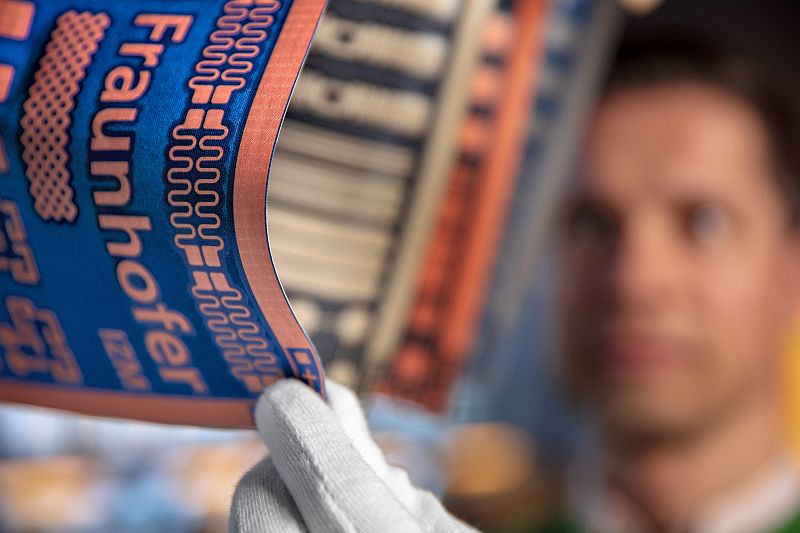Textile Circuit Boards (TexPCBs)
Success stories of e-textiles produced economically and reliably on an industrial scale remain far and few between. The ability to process and form reliable contacts on elastic conducting materials and even the sheer availability of such materials still pose an uphill challenge for the industry.
Fraunhofer IZM has teamed up with ESYS and Norafin as part of the Federal Ministry of Education and Research’s futureTex 2020 initiative for the TexPCB project, developing flexible textile circuit boards from renewable materials. Special nano-scale coated fibers are used in the project to produce a lastingly flexible, durable, and electrically conductive material that can withstand bending and folding and remains extremely elastic to prevent broken circuits or other failures in the electronics.
The metal coated fibers are processed into fabrics, ideally fleeces that allow versatile uses at low manufacturing costs. To integrate modern electric conductors in flexible circuits, specialized processing technologies were developed to match the properties of the material, aiming for resource efficient, automatable, and highly scalable processes. Careful work was also undertaken to ensure the fire safety and safe use of textile circuit boards, inspiring confidence in potential users that their TexPCBs are safe and secure products.
A unique avenue explored in the work was the research into ultrasound plastic welding as a technology for integrating electronic components in the textile circuit board itself. One special feature is that no other materials, such as solders, connectors, or additives, need to be used to ensure secure electrical contacts. The ultrasound-based technology is also far more cost-efficient and quicker to process, making it a viable alternative to traditional joining processes.
The TexPCB technology can be used with all fabric surfaces and paves the way for reliable solutions for fabric-integrated electronic systems. Its rugged nature withstands mechanical wear and tear, with washable substrates designed to remain flexible even after long-term use. There is great potential for novel applications for textile sensor electronics, such as the pressure sensor seamlessly integrated in a foam board as part of the work on the new technology. The resulting sensor system captures static and dynamic forces and can transfer the data e.g. via Bluetooth LE for visualization in an app. Other use cases are being explored to ready the technology for its future market.
 Fraunhofer Institute for Reliability and Microintegration IZM
Fraunhofer Institute for Reliability and Microintegration IZM